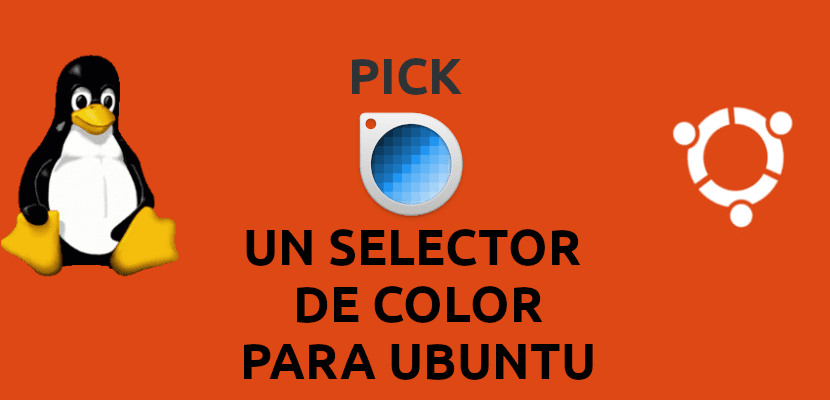
In this article we are going to take a look at Pick. It's about a very easy to use color picker, which also has a very attractive graphical interface. Whether you dedicate yourself to web design or programming, it is common to have to find out a color code for an image or a website. For this, the application that we are going to see can be very useful.
Pick is a simple application of open source color picker for Ubuntu. A colleague already told us about her in a article some time ago. In it we will find the possibility of using the history of colors, and that also remembers where we get them from.
General characteristics of Pick
- This application will allow us choose colors from anywhere on the screen. We will have the possibility to choose the color we want and Pick will remember it, give it a name and will show us a screenshot so that we can remember why we selected it and from where.
- When we select a color, thanks to selector that we will find in the upper left part, A circle will be shown with which we can zoom. The center of that circle corresponds to the pixel from which we will take the color and from where the capture will be made. In addition, it will simultaneously show us the hexadecimal code of the selected point.
- The advantage of using zoom when selecting the color is that it allows choose exactly the pixel of which we want to find out the color. To copy any color, we only have to place ourselves on the capture and the program will show us a «Copy button ». If we press it, it will copy the code to the clipboard so that we can insert it wherever we want.
- We will also be able to select the format in which we want to receive the color code. It will give us the possibility of displaying the colors in a format of the user's choice: rgba () or hex, CSS or Gdk or Qt, depending on which one you prefer to use.
For more information about this app, we can go to the project website or Pick on GitHub where the project is hosted.
Install Pick
For Ubuntu 18.04 and higher, We install snap package of this tool in a simple way from the Ubuntu software option. We will only have to open it and look in it «Pick«.
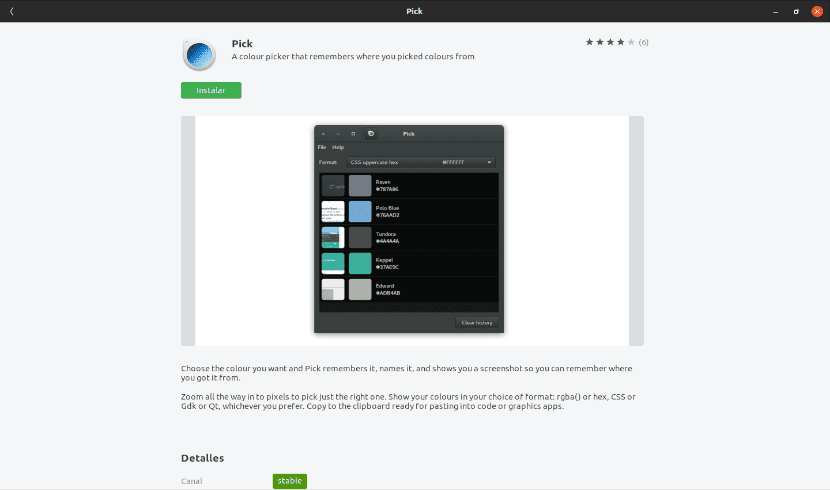
We can also follow the installation instructions offered in Snapcraft.
If you use Ubuntu 16.04, open a terminal (Ctrl + Alt + T) and install snapd first:
sudo apt-get install snapd
Then you can install the Pick color picker through the command:
sudo snap install pick-colour-picker
Use

Once the application is installed, launch it and do click on the magnifying glass icon that can be found at the top left of the window. A magnifying glass should appear on your screen with which you can use the scroll wheel of the mouse or two fingers on the touchpad, to zoom in or out and get an accurate color swatch.
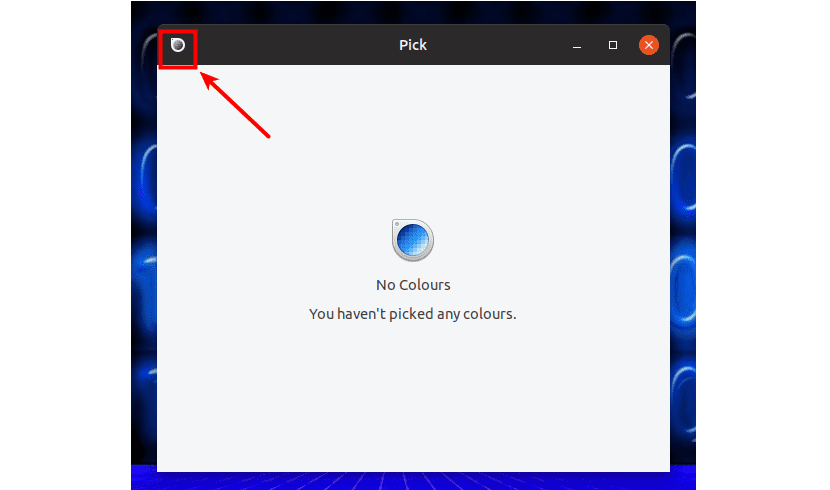
Once you have chosen a color, it will appear in the main window. You will see a small screenshot of where we selected it and a name for the sample along with its color code. When we move the mouse over a color sample, a copy button will appear. With it we can copy the code to our clipboard, and it will be ready to paste into any application.
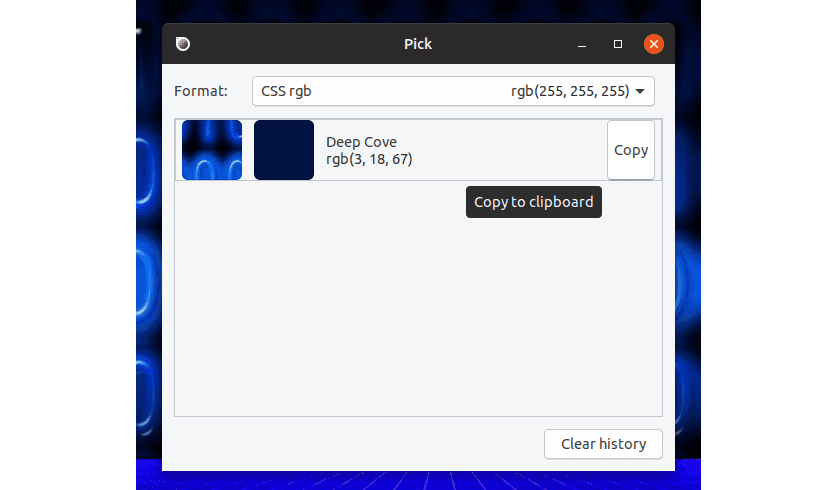
We can easily change code format by clicking on the drop-down menu 'Format'and then selecting our preferred option.
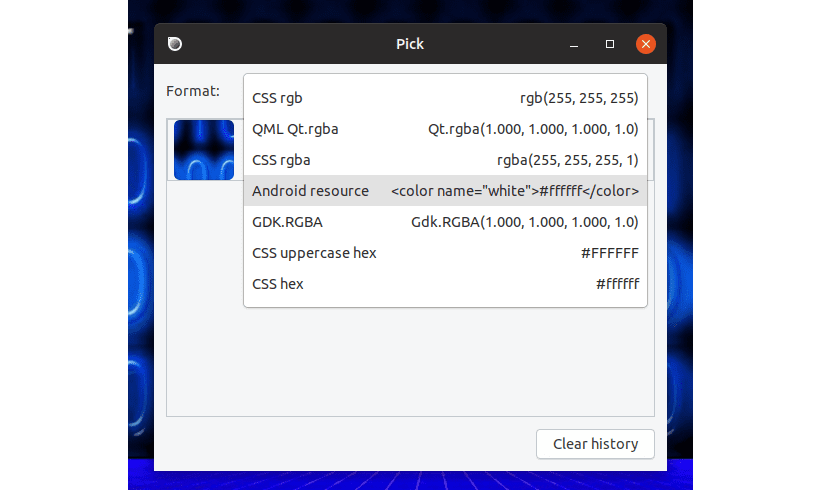
It is undoubtedly a very productive tool, which will allow us to have a record of those colors that we usually use. Whether you are a programmer, web designer, developer or anything else where you have to work with colors, I think this application is highly recommended to give it a try. You will end up with a good impression of her.